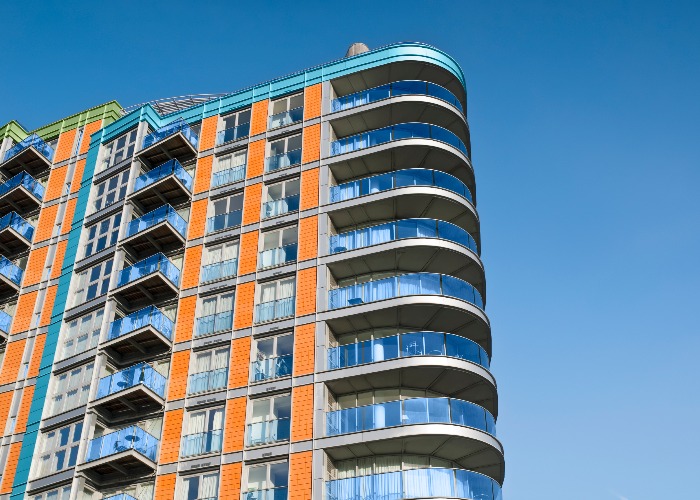Selling a flat: the cladding crisis is leaving homeowners in limbo

Unable to move or to remortgage, and all because they happened to buy a property in a high rise.
Getting a property valued, whether it’s one that you want to buy or which you already own but want to remortgage, is always a nerve-racking time.
You feel more than a little helpless while a surveyor casts their critical eye over the property, in the knowledge that their judgement will determine whether you can actually access the funding you need.
Now it has emerged that a host of potential borrowers looking to pick up or remortgage properties located in high rise properties are getting the worst possible response from surveyors ‒ that the property is completely worthless.
Search for a cheaper mortgage deal today
The fallout from Grenfell
It’s now more than two years since the Grenfell disaster, when a high rise tower block in west London went up in flames, leading to 72 deaths.
A big contributing factor in just how devastating the blaze ended up being was the cladding ‒ because it was flammable it caused the fire to spread swiftly.
One of the Government’s responses to the Grenfell disaster was to set out new guidance on establishing the make-up of any cladding on tower blocks across the country, with properties now expected to meet these higher fire safety standards.
The standards have been accompanied by the launch of a new fund for owners of these tower blocks to access, in order to get any flammable cladding replaced, with £200 million available.
And what’s more, surveyors are now quizzing property owners on whether the building meets these new fire safety standards. And if the owner can’t respond, or do not have the documentation to hand, the surveyors are delivering a nil valuation.
In other words, people are being told that the home they want to borrow against is worth absolutely nothing.
Can’t move, won’t move

I’ve spoken to a host of mortgage brokers over the last couple of weeks who have had clients in precisely this position, wanting to buy a new property only to discover it’s impossible to get a mortgage for it.
Importantly this doesn’t always mean that the property is a fire risk ‒ there have been some cases where there wasn’t even any cladding present ‒ but simply that the owners were not in a position to clarify whether the overall building met these new standards.
Rather than deliver a valuation under the assumption that everything is above board, but on the proviso that proof is provided, surveyors are instead expected to value it at nothing until the situation changes.
Unsurprisingly this can lead to a huge delay to the transaction, potentially causing the chain to collapse.
And for those properties which don’t meet the new standards, there are people who live there who are trapped ‒ nobody can get the funding to buy the property from them, and if they happen to come to the end of a fixed rate, they can’t remortgage to a cheaper deal either.
Through no fault of their own they are mortgage prisoners.
Search for a cheaper mortgage deal today
What’s the answer?
I definitely don’t blame the Government for pushing the owners of high rise buildings to ensure they aren’t lined with cladding that will go up in a blaze, though the fact that it has simply made the funding accessible by the building owners ‒ relying on them to act rather than taking that decision out of their hands ‒ is not ideal.
Similarly, it’s understandable that mortgage lenders don’t want to lend against at-risk properties. Plenty of lenders are already ‘exposed’ to buildings in this position and are understandably concerned about adding to that.
But it’s difficult not to feel for those people who might want to move or remortgage but are now unable to do so, having done nothing wrong.
They aren’t the owners of the building, simply of flats or apartments within the tower block.
As such, this isn’t something they can actually do anything about ‒ they are reliant on the building owners to clarify the status of any cladding on site, and to get it upgraded to a non-flammable alternative if necessary.
Until any of that happens, their lives are effectively on hold, preventing them from moving to a more appropriate property for their needs, or even forcing them to move onto their lender’s standard variable rate, and swallow a potentially sharp jump in their mortgage repayments.
The Grenfell disaster has rightly served as a wake-up call when it comes to fire safety in high rise buildings.
But two years on, and with the knowledge that cladding played a big part in the disaster from early on, it seems farcical that we are still in a position where the Government has to put aside a pot of money for the owners of the best part of 200 buildings to get them into shape.
It’s not fair that people’s lives are in limbo simply because the owners of high rise buildings either aren’t responsible enough to get their cladding sorted, or are too bone idle to clarify the make-up of the cladding promptly so that the owners of apartments can get on with their next house move.
Comments
Be the first to comment
Do you want to comment on this article? You need to be signed in for this feature